Hey everyone! Have you ever wanted to bring some greenery into your home but don’t have the space for a garden? Well, I’m here to tell you that with gravel aquariums, you can grow plants right at home in an aquarium.
Not only is it possible, but it’s also surprisingly easy and rewarding too! In this article, we’ll be discussing how to set up a gravel aquarium so that plants will successfully thrive.
Gravel aquariums are becoming more popular every day because they offer many advantages over traditional soil gardens. They require less maintenance since water doesn’t evaporate as quickly as it does with soil-based gardens, and there’s no need for weeding or excessive watering.
Plus, these types of gardens look beautiful when done correctly—the colorful pebbles add a unique visual appeal compared to potted plants or terrariums. So if you’re looking for something different than the usual gardening setup, then keep reading!
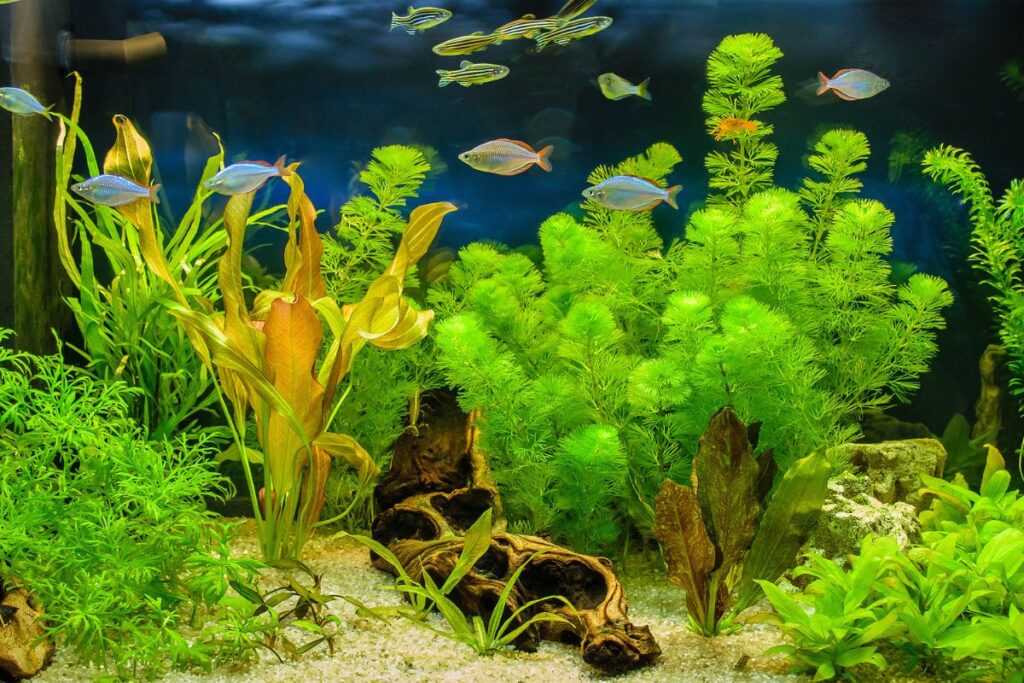
Contents
Can Plants Grow In Gravel Aquarium?
I’m often asked if plants can grow in gravel aquariums, and the answer is yes! With careful consideration of overcrowding, lighting requirements, plant nutrition, and regular aquarium maintenance, you can have a lushly planted tank. You’ll need to make sure there’s enough space between each plant for root development as well.
When it comes to planting your gravel aquarium, research the types of plants that thrive best under similar conditions. Some may require special lighting or more frequent feeding than others. Make sure to take into account how quickly certain plants will spread, so they don’t overtake slower-growing species. Proper spacing also ensures that no single plant blocks out light from its neighbor.
Finally, keep in mind that an established gravel aquarium has fewer nutrients available for plants compared with soil-based setups. To supplement this deficiency, use liquid fertilizers regularly and test water parameters frequently to ensure optimal growth rates among all aquatic life in your tank.
How To Grow Aquarium Plants In Gravel
I’m sure you’re wondering how to actually grow plants in your gravel aquarium. The process requires water fertilization, soil amendments, and light requirements to ensure the health of your aquatic plants.
Water fertilizers are essential for root growth as they provide necessary nutrients like nitrogen, phosphorous and potassium that help the plant absorb more carbon dioxide from the environment. Soil amendments like sand or clay can also be added to increase nutrient availability and encourage healthy root growth.
Additionally, proper lighting is important for photosynthesis, which helps create energy for the plant’s survival. Make sure you choose a full-spectrum bulb that has a wavelength range between 400nm – 700nm so it provides enough intensity for all parts of the spectrum your aquatic plants need for healthy development.
Finally, keeping an eye on pH levels is key when growing aquarium plants in gravel since too acidic or alkaline conditions may prevent them from absorbing enough nutrients from the substrate. Regular tests should be done using reliable instruments such as API Freshwater Master Test Kit* to make sure everything is balanced according to your plan’s needs.
With these tips in mind and a little effort on your part, you’ll have gorgeous aquatic plants thriving in no time!
*As an Amazon Associate I earn from qualifying purchases at no additional cost to you.
What Plants Grow Best In Gravel Aquariums?
Knowing what types of plants are best suited for aquascaping with gravel will help you create the perfect underwater garden in your tank. Here are some great examples of aquatic plants that do particularly well when grown on top of or within a layer of aquarium gravel:
Anubias
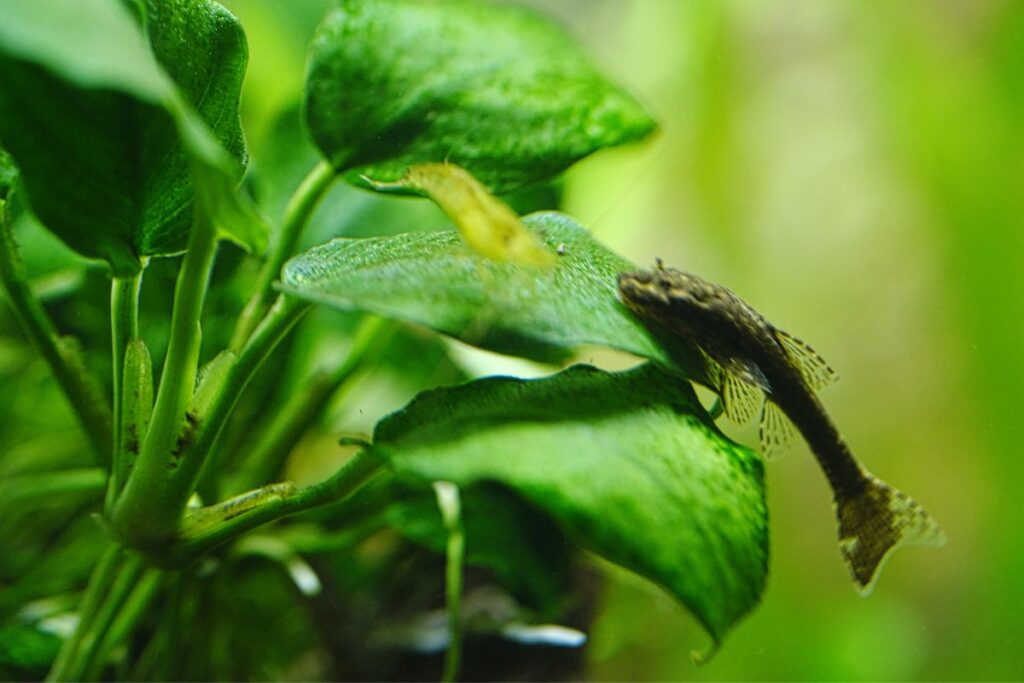
Anubias species are slow-growing, hardy plants that can grow both fully submerged or partially immersed in water. They have thick, dark green leaves, which makes them a popular choice for gravel aquariums. They thrive in low to moderate lighting and can be attached to rocks, driftwood, or simply planted in gravel.
Java Fern
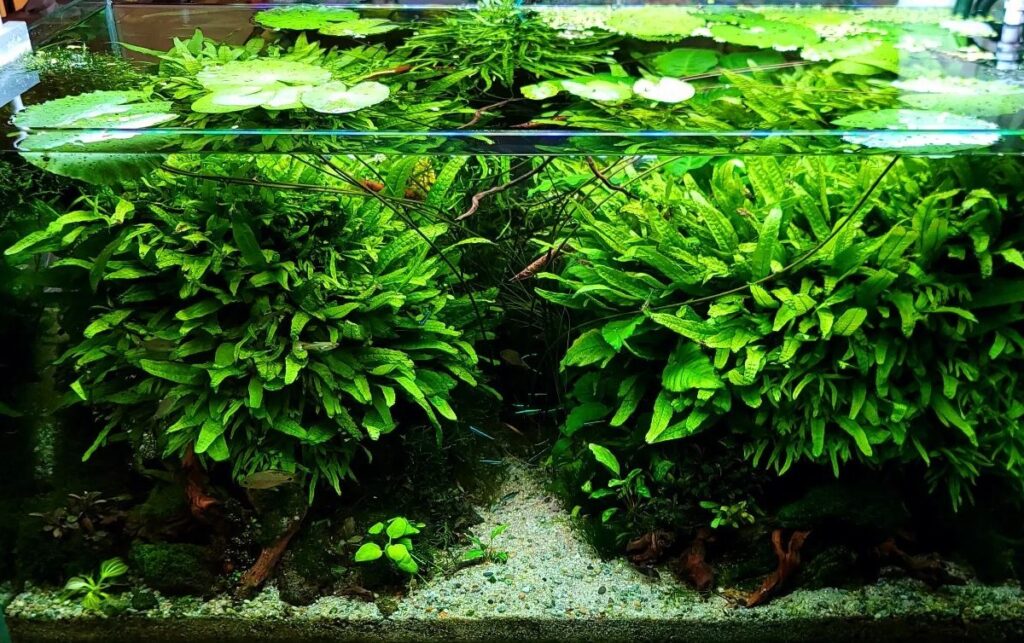
Java fern is another hardy plant that does well in gravel aquariums. It has long, narrow leaves and can grow in low to moderate lighting conditions. Like Anubias, it can be attached to rocks or driftwood or planted directly in gravel.
Amazon Sword

These plants have large, broad leaves, which makes them an excellent choice for creating a lush underwater landscape in gravel aquariums. They prefer moderate to strong lighting and can grow quite tall, making them suitable for larger aquariums.
Cryptocoryne
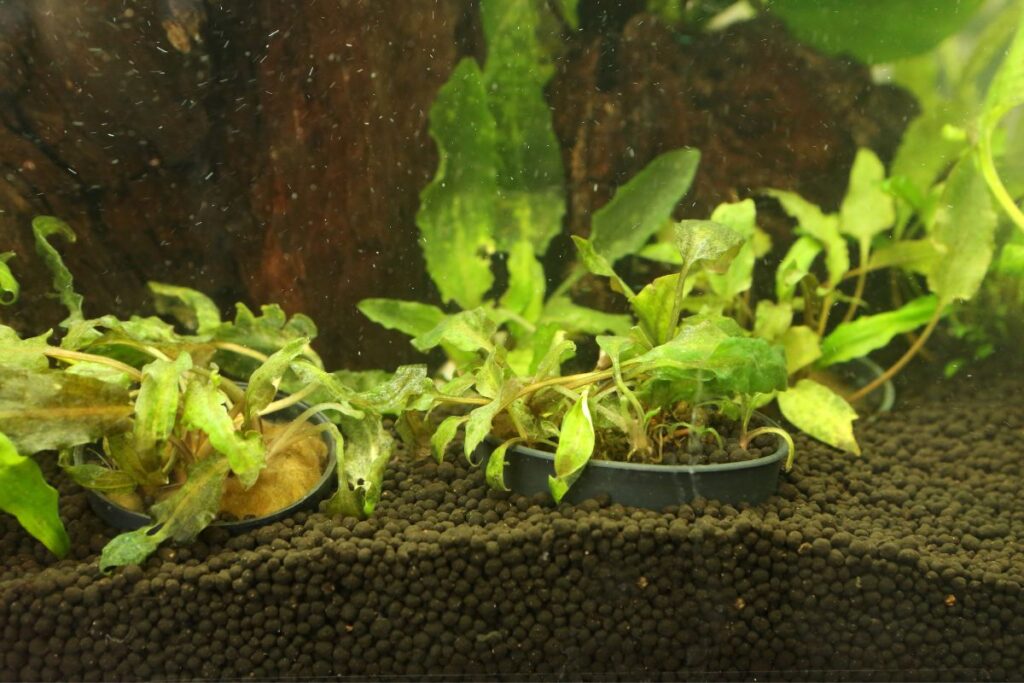
Cryptocoryne species are popular for their unique, wavy leaves that can vary in color from green to brownish-red. They can grow in low to moderate lighting conditions and do well when planted in gravel.
Vallisneria
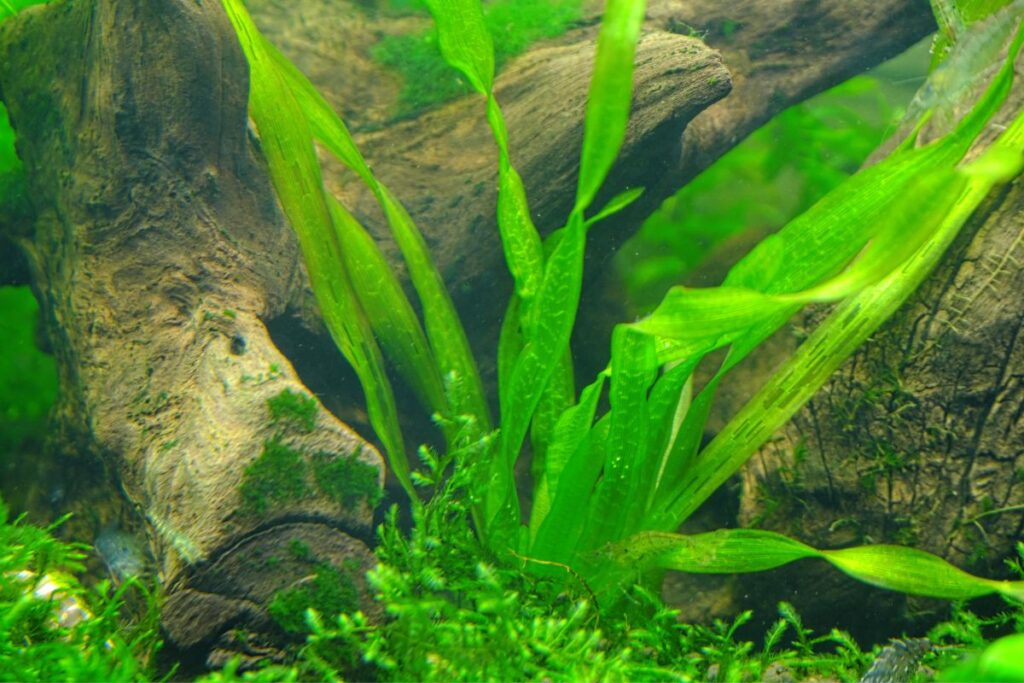
Vallisneria is a long, grass-like plant that can create a stunning underwater forest in gravel aquariums. It prefers moderate to strong lighting and can grow quite tall, making it suitable for larger aquariums.
Java Moss
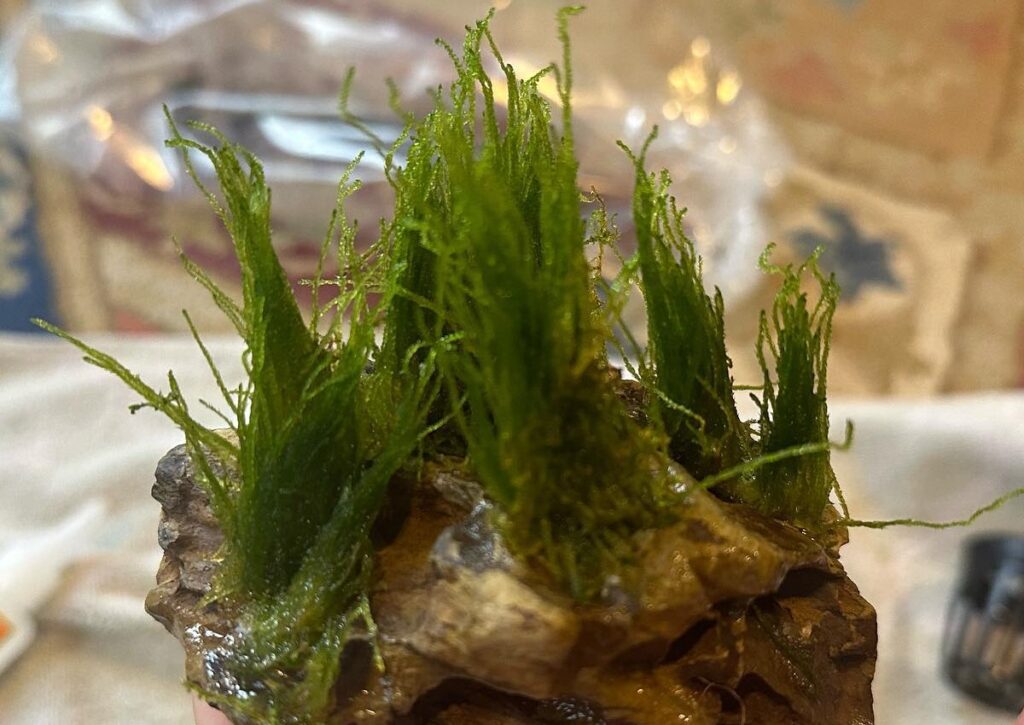
Java moss is a versatile, low-maintenance plant that can grow on rocks, driftwood, or in gravel. It provides excellent cover for fish and invertebrates and can grow in low to moderate lighting conditions.
Dwarf Sagittaria
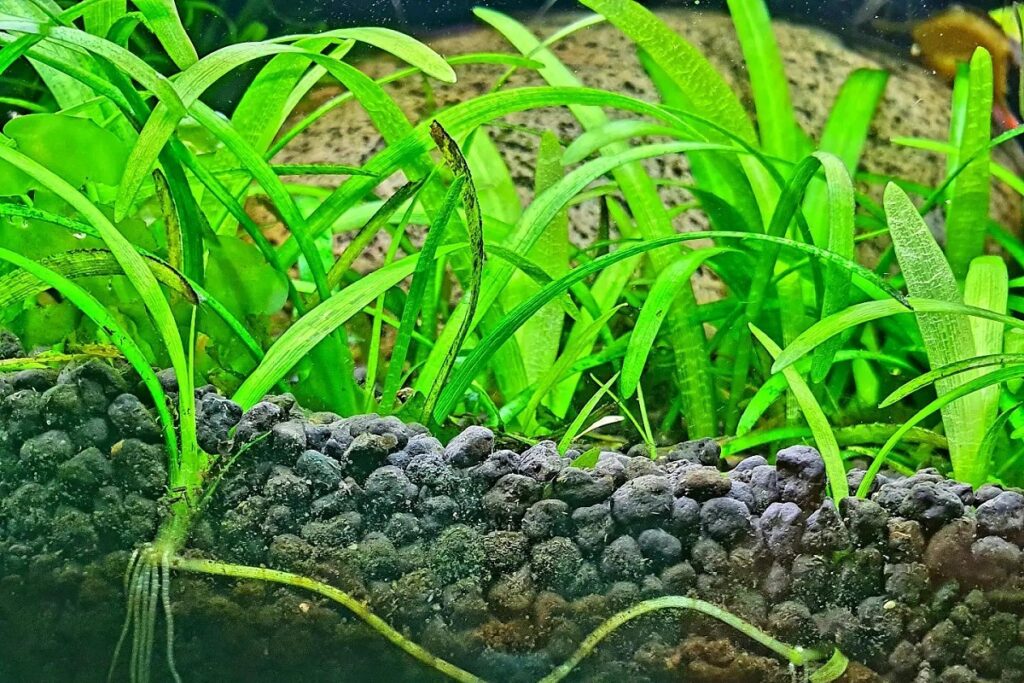
This small, grass-like plant is perfect for creating a carpet effect in gravel aquariums. It can grow in moderate to strong lighting and spreads by sending out runners, eventually forming a dense mat of greenery.
Water Wisteria
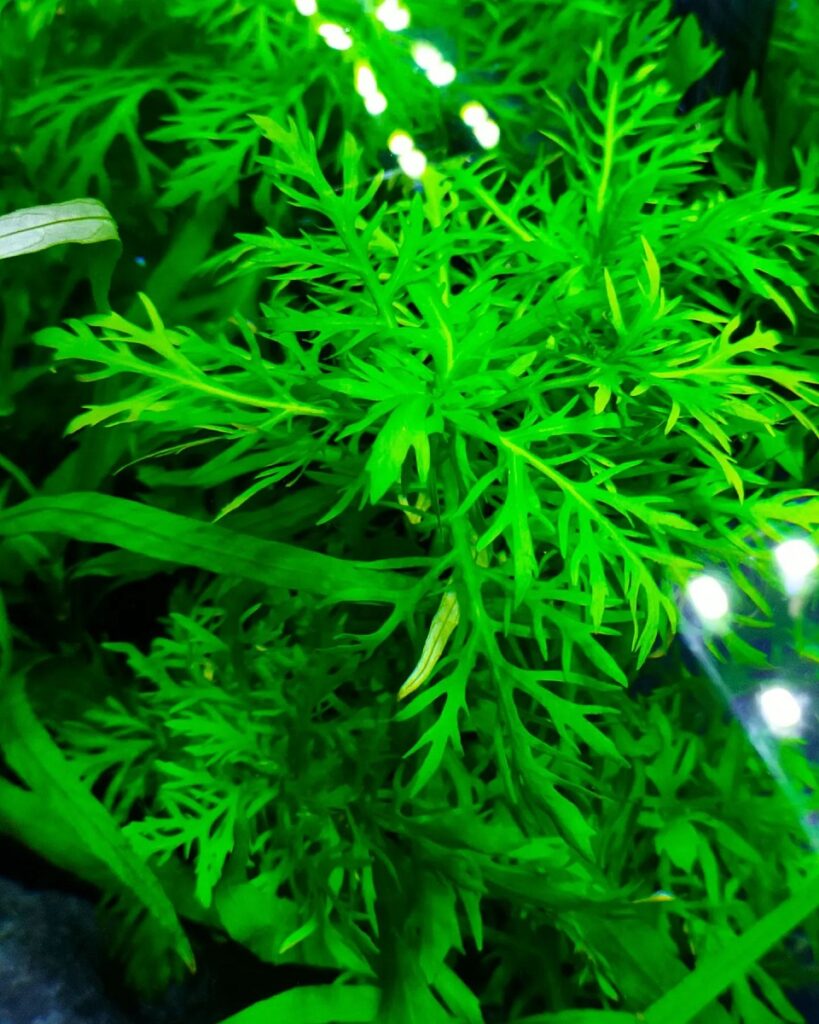
Water wisteria is a fast-growing plant with attractive, feathery leaves. It thrives in moderate to strong lighting and can be planted directly in gravel or attached to rocks or driftwood.
Ludwigia
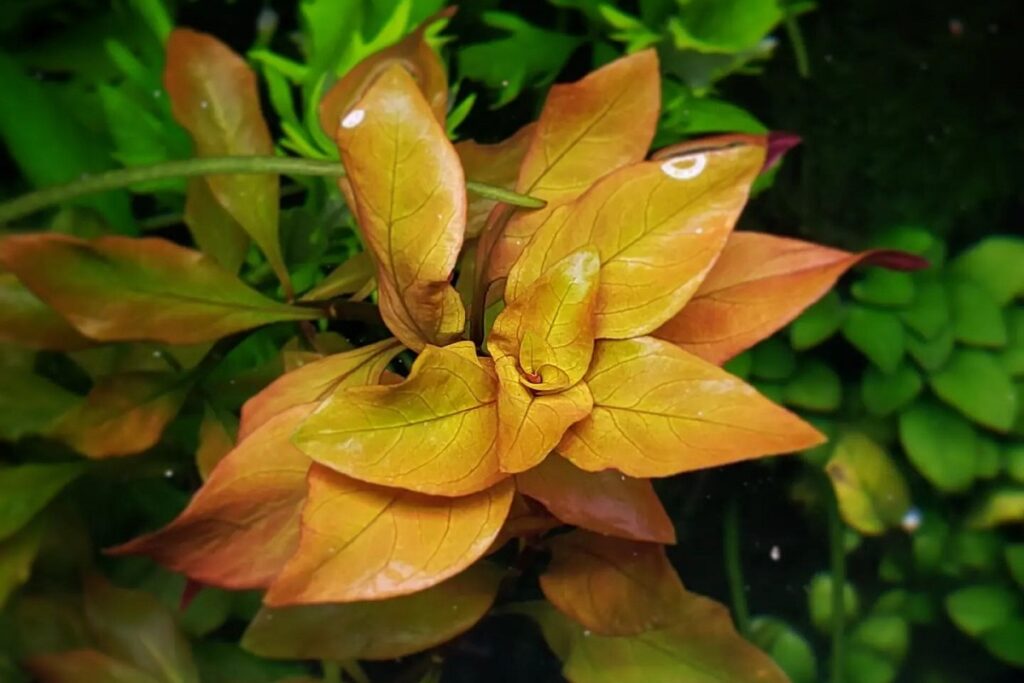
Ludwigia species are colorful, stem plants that can add a pop of color to gravel aquariums. They prefer moderate to strong lighting and can be easily planted in gravel.
Hornwort
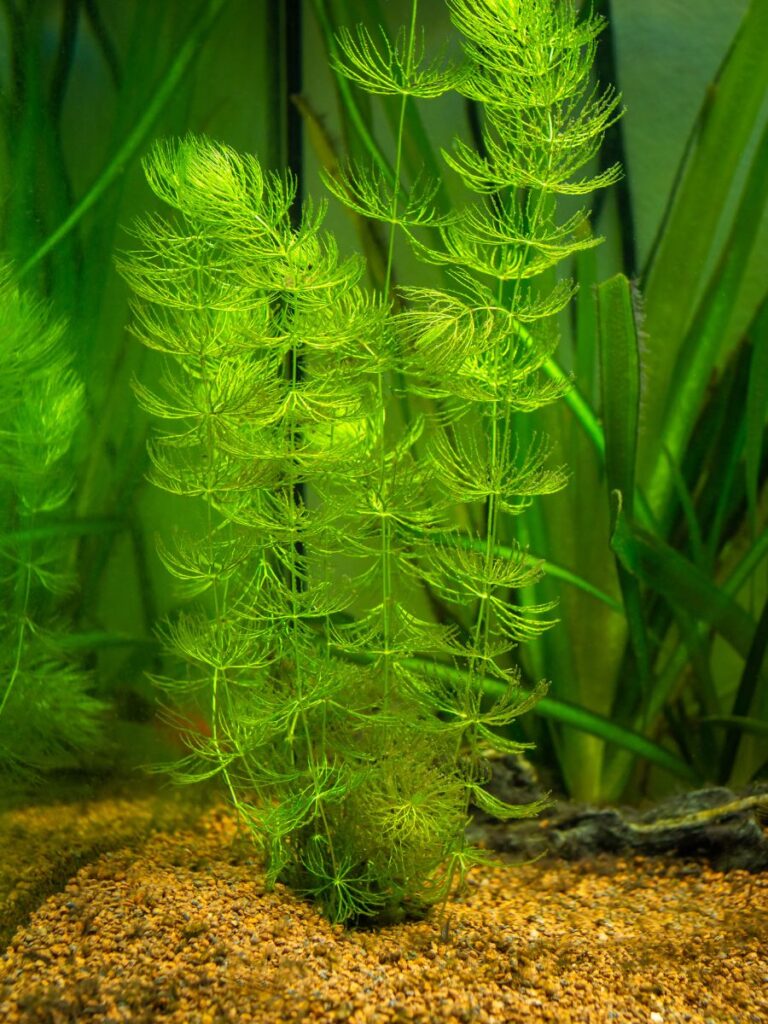
Hornwort is a versatile, fast-growing plant that can either be planted in gravel or left floating in the aquarium. It provides excellent cover for fish and invertebrates and can grow in low to moderate lighting conditions.
Madagascar Lace
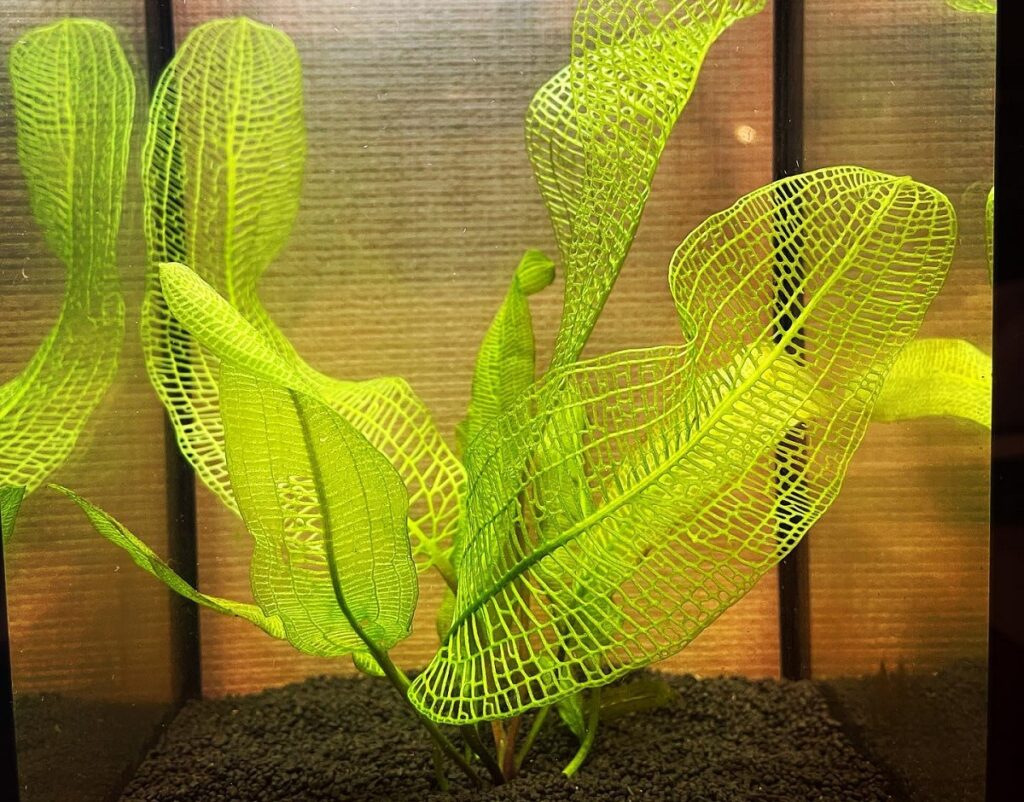
Madagascar Lace (Aponogeton madagascariensis) is an aquatic plant native to Madagascar. It is known for its unique and intricate lace-like leaves, which make it a popular and attractive addition to gravel aquariums. The plant requires moderate to high lighting and prefers a nutrient-rich gravel substrate. Madagascar Lace is a relatively slow grower and can reach up to 12 inches in height. It is best suited for medium to large aquariums.
Red Tiger Lotus
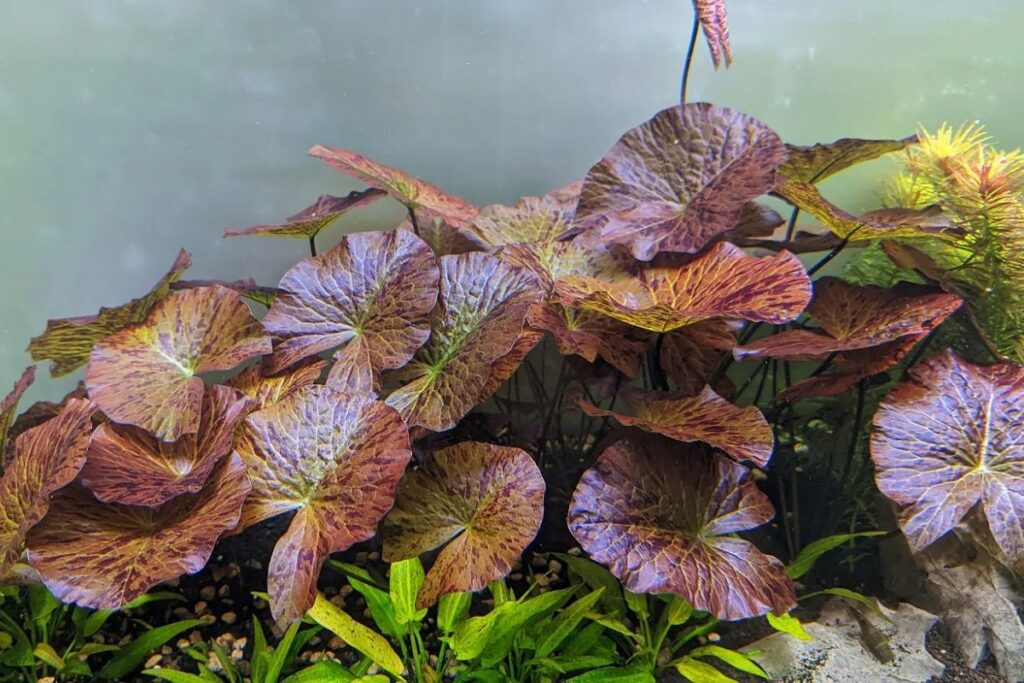
Red Tiger Lotus (Nymphaea zenkeri) is a stunning aquatic plant with striking red and green leaves. It is a tropical lily species that can grow both submerged and floating on the water surface. The plant forms a bulb at the base, which can be planted into a gravel substrate. Red Tiger Lotus requires moderate lighting and can grow up to 20 inches tall, making it suitable for a variety of aquarium sizes. Regular pruning will encourage the plant to produce more leaves and maintain a compact growth habit.
Bucephalandra
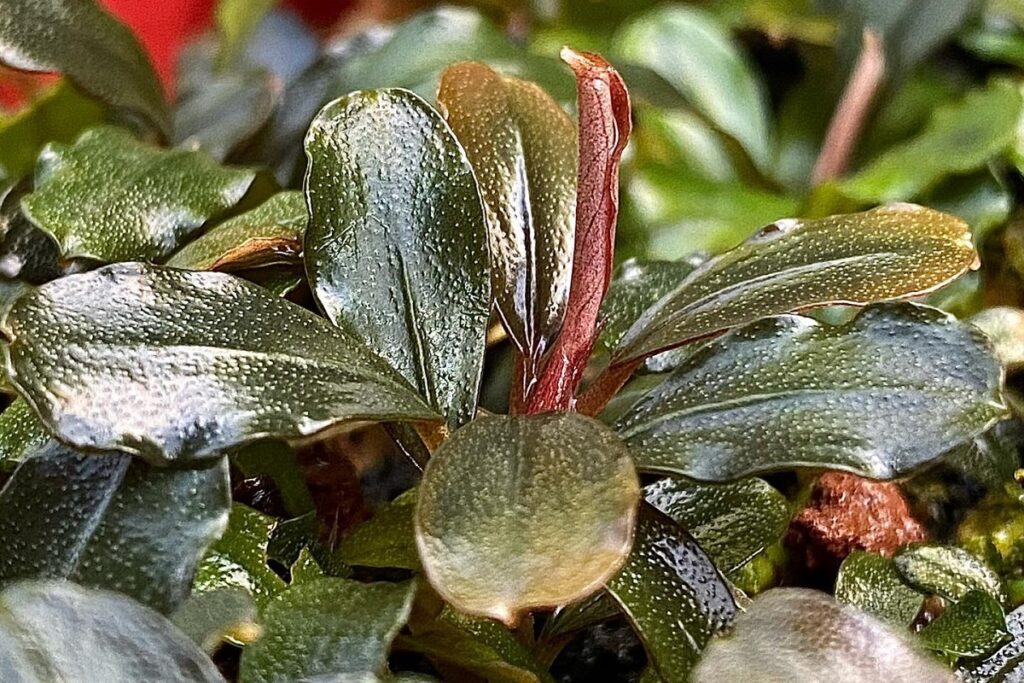
Bucephalandra is a genus of aquatic plants native to Borneo, and it’s well-suited for gravel aquariums. These plants have thick, dark green leaves that can exhibit a range of colors, from blue to red, depending on the species and lighting conditions. Bucephalandra is a slow grower and requires low to moderate lighting. It can be attached to rocks or driftwood or planted directly in a fine gravel substrate. These plants are hardy and can thrive in a range of water conditions, making them ideal for beginners.
Waterweeds

Waterweeds, also known as Anacharis or Elodea, is a popular aquatic plant known for its rapid growth and ability to absorb excess nutrients from the water. The plant has long, thin, green leaves that grow in whorls along the stem. Waterweeds can be planted directly in gravel substrates and thrive in low to moderate lighting conditions. They are a great choice for beginners and serve as a natural water filter, helping to maintain water quality in the aquarium.
Bacopa Caroliniana
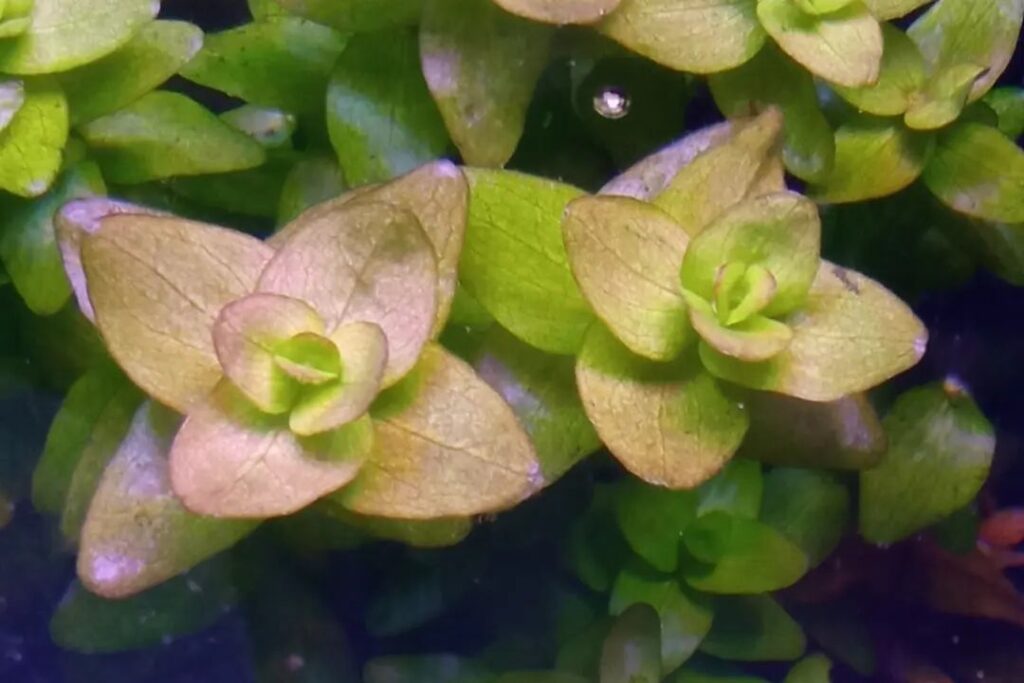
Bacopa Caroliniana, also known as Lemon Bacopa, is an aquatic plant native to the southeastern United States. It has small, rounded leaves that grow along the stem and can exhibit a slight blue tint under high lighting conditions. Bacopa Caroliniana is a moderate grower and can be planted directly in gravel substrates. It requires moderate to high lighting and can grow up to 12 inches tall, making it suitable for both small and large aquariums. The plant is also known for its mild lemon scent when the leaves are crushed.
What Gravel Is Best For Plants?
The best gravel for aquarium plants largely depends on the type of plants being grown, as well as your preferences. Generally, fine to medium-sized gravel with a size of 2-5mm is considered ideal for most aquatic plants. This size of gravel allows for sufficient water flow and oxygen exchange, while also providing a stable base for the plants to root and anchor themselves. Additionally, the choice of gravel should be based on factors such as nutrient content, pH buffering capacity, and aesthetics.
One popular choice among aquarists is laterite-based gravel, which is rich in iron and other essential nutrients required for healthy plant growth. This type of gravel provides a slow and steady release of nutrients, ensuring that the plants receive a consistent supply of essential minerals. Another option is nutrient-rich aquatic soil, which mimics the natural environment of many aquatic plants and provides a good balance of nutrients and minerals.
Another factor to consider is the pH buffering capacity of the gravel. Some types of gravel, such as crushed coral, can help maintain a stable pH level in the aquarium by releasing calcium and other minerals that buffer the water. This can be particularly beneficial for aquatic plants that prefer a slightly alkaline environment.
Aesthetically, the choice of gravel will depend on the desired look of the aquarium. Natural-looking gravel, such as river rocks or pebbles, can create a more realistic environment for the plants to thrive. Alternatively, some aquarists may prefer the uniform appearance of commercial aquarium gravel, which is available in various colors and sizes.
In short, the best gravel for aquarium plants is one that provides a stable base for rooting, contains essential nutrients and maintains a stable pH level. The choice of gravel should be tailored to the specific needs of the plants being grown, as well as the preferences of the aquarist in terms of aesthetics and water chemistry.
How Deep Should Gravel Be For Plants?
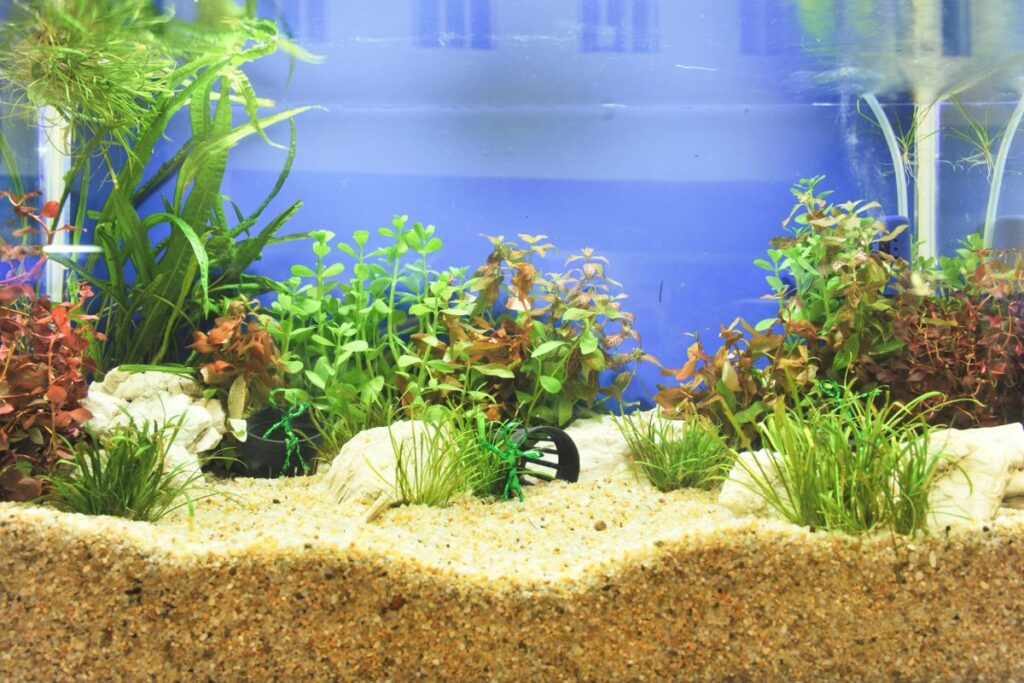
When it comes to setting up an aquarium, we all want to create the perfect environment for our little aquatic friends and their beautiful green companions, the plants. And one key aspect of creating that ideal environment is the depth of the gravel substrate in the aquarium.
Now, why is this important? Gravel not only adds to the visual appeal of our aquariums but also serves as a home for beneficial bacteria that help maintain a clean and healthy environment for our fish and plants. Moreover, it provides a base for plants to anchor their roots and get essential nutrients for their growth.
So, how deep should our gravel be? Well, the answer is, it depends on the type of plants you have in the aquarium. Generally speaking, a depth of 2 to 3 inches (5 to 7.5 cm) should be sufficient for most plants. This depth provides enough space for roots to anchor and grow while still allowing water to circulate effectively.
However, if you have plants that are heavy root feeders or have larger root systems, such as Amazon Swords or Cryptocorynes, you might want to consider a gravel depth of 3 to 4 inches (7.5 to 10 cm). This will provide ample space for the roots to spread and absorb nutrients without being overcrowded.
On the other hand, if you have plants that do not necessarily need to be rooted in the substrate, such as Java Moss or floating plants, a shallower depth of 1 to 2 inches (2.5 to 5 cm) will be just fine.
So, the next time you are setting up an aquarium or adding plants to your existing one, remember that the depth of the gravel is a crucial aspect to consider. A happy and healthy aquarium starts with a strong foundation, and that foundation is the gravel bed. With the right depth, your plants will thrive, and so will your beautiful aquatic friends.
How Do You Anchor Aquarium Plants In Gravel?
Now that you know how deep the gravel should be for plants, it’s time to learn how to anchor them in the substrate. Plants are great additions to any aquarium as they help keep the water clean and provide oxygenation. But if not secured properly, they can easily float away or fall over.
Here are some planting tips to ensure your aquatic plant stays anchored:
- Tie the Plant to Driftwood or Rocks – Securing a plant with a fishing line is an effective way of making sure it doesn’t move around. Wrap the line tightly around its stem several times before tying it firmly onto driftwood or rocks at the bottom of the tank.
- Use Terracotta Pots – Fill terracotta pots with gravel, then place each pot on either side of the aquarium where you want to secure your plants. Make sure there’s enough space between them so that light reaches all parts of the tank. Once planted inside their pots, these will act like anchors and hold down your plants securely.
- Use Plant Weights – If you have bigger, heavier plants, you may need additional weights like stones or small clay balls placed on top of their root systems. This will help keep them in place even during strong currents from filters or pumps.
- Nylon Mesh – Utilizing nylon mesh is another good option for anchoring medium-sized plants. Place one piece of a mesh directly behind each plant for extra support, keeping in mind lighting requirements and fertilizer needs based on water chemistry within your tank environment when doing this.
Once you’ve established proper anchoring techniques for your aquarium plants, there’s no telling how beautiful everything can look! Incorporating lush greenery into a freshwater setup adds life and vibrancy while enhancing filtration capabilities—just make sure those babies stay put!
Is Gravel Or Sand Better For Aquarium Plants?
Both gravel and sand have their own advantages, so let’s quickly go over them.
Gravel is a popular choice because it allows water to flow freely, preventing harmful substances from accumulating. Plus, it’s easy to clean and maintain. The larger pieces of gravel also provide a nice anchor for your plants’ roots, helping them stay put.
On the other hand, sand creates a more natural-looking environment, reminiscent of riverbeds and lakes. It’s also gentler on the delicate leaves and stems of your plants. The finer texture of sand means that it can compact more easily, which some plants might appreciate for their root systems.
However, sand can sometimes be problematic for aquariums with high water flow or strong filtration systems, as it can easily be disturbed and suspended in the water, causing cloudiness and potential damage to equipment.
So, which one is better? Well, it really depends on the specific needs of your plants and the look you’re going for in your aquarium. Some plants may thrive better in gravel, while others might prefer sand.
My advice? Do a little research on your chosen plants’ preferences, and don’t be afraid to experiment. After all, the most important thing is creating a healthy and beautiful home for your underwater friends.
Related Post:
Can Plants Grow In Sand Aquarium?
Conclusion
In conclusion, growing aquarium plants in gravel is possible if you know what to do. With the right type of gravel and anchoring technique, your plants can have a healthy home with plenty of nutrients available for them to thrive.
